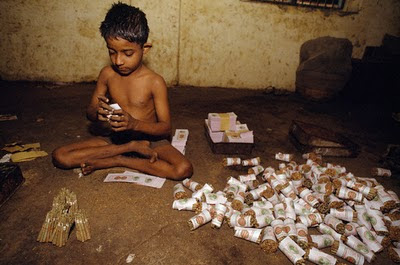“The real source of market promise is not the wealthy few in the developing world, or even the emerging middle-income consumers: It is the billions of aspiring poor who are joining the market economy for the first time.”
I found the topic quite interesting and welcomed the opportunity to contribute to a whitepaper on the subject. So after some weeks of discussion and sharing of examples on the platform I was wondering how I could best contribute to the topic. I decided that it could be interesting to look at the shared examples through the business model lens, which I explained in an earlier post (what is a business model). In this blog (which I am writing from Yaoundé, Cameroon) I will simply share an interesting business case for each of the nine business model blocks I usually use to describe a business model. What I learned was that doing business at the bottom of the pyramid is really nothing else than real
There are examples of business model innovations in each building block. The most obvious is innovating in the value proposition. When mobile phones appeared in the market they offered a completely different value proposition than fixed line phones. In developing countries where fixed telecom infrastructure is weak and waiting lists for phone lines unbelievably long, mobile services were destined to thrive. In Nigeria MTN, a South African Telco set up a successful venture to tap into the 130 million person market.
Regarding target customer segments and distribution channels, Arvind Mills Ruf n Tuf Jeans (www.arvindmills.com) is a particularly interesting case. The entrepreneur Arvind Mills saw a niche market in stylish jeans at an affordable price that was not being filled by any company. Target customers are Indians who cannot afford conventional jeans but still wish to purchase them. So Ruf n Tuf offers a jeans kit at $6/pair to local tailors who function as a distribution channel to reach the final local customers. Due to the large scale Arvind Mills manages to make a profit on the low margins per jeans.
Anand Milk Union Limited (www.amul.com) is an interesting case of how a business innovation can change the fortunes of the poor in a developing country like India by integrating local skills and local activities into its business model. India was a country with milk shortfall and imported milk every year in form of milk powder. Then AMUL built up a huge milk industry from scratch together with local farmers. Today India is the world’s largest milk producer and it even exports milk. AMUL products are found on the shelves of Walmart in the USA and many other retail giants in the world.
A nice example of how partnerships can lead to BOP success is the case of GrameenPhone (www.grameenphone.com) in Bangladesh. Its founder, Iqbal Quadir, realized that if a woman could be given a micro-credit to buy a cow and sell milk then the same could be done for phone services. GrameenPhone was born. Supported by the multinational company Telenor he bought a mobile network license and set up a mobile phone network. Then he partnered with Grameen Bank, an established micro-credit institution in Bangladesh who brought in the knowledge on credits and a database of potential customers. The bank started offering women in villages a credit to buy mobile phones, which they used to sell phone calls to the villagers, repay their debts and make a daily living. Grameen Bank expanded its lending and GrameenPhone harvested a network of women reselling phone calls through their network.
Hindustan Lever Limited (www.hll.com) has been able to create new revenue streams by being proactively engaged in rural development in India for nearly 30 years. It set up Project Shakti (www.hllshakti.com) in 2001 with the objective of creating income-generating capabilities for underprivileged rural women, by providing a sustainable micro enterprise opportunity, and improving rural living standards through health and hygiene awareness. With working capital provided by HLL, Shakti women entrepreneurs sell HLL products to their local village. This gives HLL access to large markets that would not otherwise be easily accessible. 70% of the Indian population lives in villages, of which there are around 627,000.
Regarding the cost structures of BOP business models there is often a huge pressure to produce extremely efficiently, because products usually have to be cheap enough for Tier 4 customers. In general BOP cost structures are kept low by selling very large volumes and thus profiting from economies of scale. In addition many of the BOP business models described above make use of affiliation and entrepreneurship to shift parts of the costs to other partners in the business model. GrameenPhone, Arvind Mills and Project Shakti are just three examples of how tapping into local entrepreneurship by promoting micro business ownership can give access to powerful free distribution networks of incredible reach. This could have never been achieved by the companies themselves
